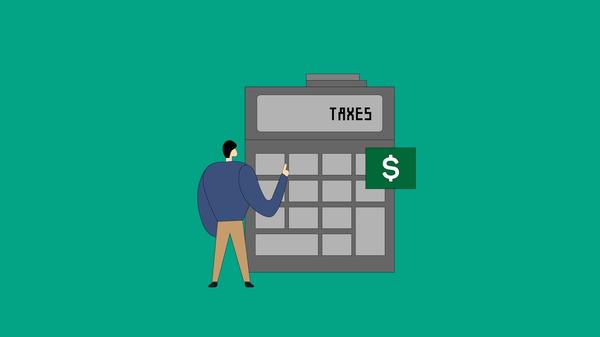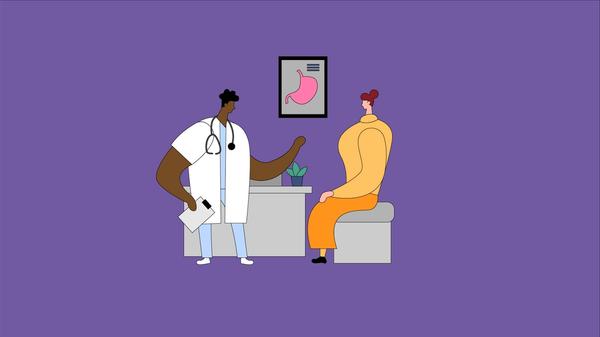RRSPs are one of the two major retirement accounts available to Canadians (along with TFSAs).
They offer a tax-advantaged wrapper for purchasing financial assets like stocks or bonds. However, these tax benefits come with a tradeoff. If you're not careful, improper withdrawals from your RRSP could result in unintended tax consequences.
Fortunately, we've got you covered. This article will explain how to properly withdraw from your RRSP.
What is RRSP?
RRSP is an acronym for Registered Retirement Savings Plan, introduced by the government in 1957 to help Canadians save for retirement.
It is a tax-advantaged account, which means RRSPs allow tax breaks on their contributions and help them save money. Therefore, any money you contribute to an RRSP today is exempt from CRA taxes and will only be taxed the year you withdraw the money.
RRSP is a tax-deferred account, which means you are liable to pay taxes when you withdraw money during retirement. However, if you choose to withdraw money before your retirement, several factors need to be considered.
When can you withdraw from your RRSP?
You can withdraw from your RRSP at any time as long as your funds are not in a locked-in plan. While there is no penalty on withdrawals, you may incur a withholding tax on your withdrawals, and the amount must be declared as income when filing your taxes.
RRSP Withdrawals at Maturity
Your RRSP account reaches maturity on the last day of the calendar year you turn 71. After maturity, you can withdraw your RRSP funds through 3 options, each having its tax implications.
Option 1: Lump-Sum RRSP Withdrawal
The first option for you is to withdraw all your RRSP funds as a lump sum. While this may be an attractive option to withdraw all your savings at the time of retirement, lump-sum withdrawals are subject to a withholding tax. These withdrawals will need to be declared on your tax returns and could incur a higher income tax bill if you are in a high tax bracket.
Unless you have a very strong reason to make a lump-sum withdrawal, generally it is not an advisable option during retirement. An excess amount of cash on hand could lead to frivolous financial decisions and could hurt your overall well-being during retirement.
Option 2: Convert RRSP to RRIF
The second option is to convert your RRSP account into a Registered Retirement Income Fund (RRIF). This type of account offers a steady stream of retirement income, with a minimum amount that must be withdrawn each year.
While the amount withdrawn every year does not incur any withholding tax, it is considered as taxable income and must be declared on your tax returns. An RRIF offers a wide variety of investments to choose from, such as ETFs, government bonds, mutual funds, etc. and any gains on these investments will not be taxed as long as they are in your RRIF.
The amount you withdraw from RRIF each year is dependent on when the RRIF account was established and the total amount in RRIF. Any amount you withdraw over the minimum withdrawal amount will be subject to withholding tax.
Option 3: Buy Annuities
Another option to receive guaranteed retirement income is to convert your RRSP to an annuity. An annuity can offer a safe way to receive retirement income for the rest of your life or for a specific time duration.
Purchasing annuities are not subject to withholding tax. However, you may have to pay tax on the income you receive from annuity payments.
RRSP Withdrawals before Maturity
Life is unpredictable and you may face a situation where you are forced to make an early withdrawal from your RRSP. Let us understand the consequences of making an early withdrawal from your RRSP account:
RRSP early withdrawals are subject to Withholding Tax
Any withdrawals from your RRSP account will incur a withholding tax. The tax rate is dependent on the amount withdrawn as well as your place of residence.
To completely understand RRSP Withholding Taxes, you can read our article here.
You may have to pay additional Income Tax
Any early withdrawal from your RRSP account will be treated as income for the respective tax year and must be declared when filing taxes. If you are in a high income tax bracket, you will have to pay more taxes.
You lose on the Power of Compounding
Making an early withdrawal can result in losing large gains on your contributions from the power of compounding which can massively impact your savings at a later date.
You lose your Contribution Room
An early RRSP withdrawal will result in a permanent loss of contribution room.
RRSP Withdrawals without Paying Taxes
When your RRSP withdrawals are used to buy your first home or to finance your education, your withdrawals will be tax-deferred.
Home Buyers’ Plan (HBP): Are you planning to buy your first home? Then an early withdrawal from your RRSP account will be tax-deferred under the Home Buyers’ Plan (HBP).
The Home Buyers’ Plan allows you to withdraw up to $35,000 from your RRSP to buy or build a home, tax-free. It allows you to repay the funds withdrawn over 15 years, starting from the second year from the date of withdrawal.
The CRA will send a statement each year, stating the balance you owe, the total number of payments made, and the minimum payment required. If you wish to learn more about the criteria to qualify for HBP you can visit this link.
Lifelong Learning Plan (LLP): Do you plan to finish your education or learn a new skill and enroll full-time for your education? The Lifelong Learning Plan (LLP) allows early tax-free withdrawals from your RRSP for yourself or your spouse/partner for education or training on a full-time basis.
All participants who withdraw from their RRSP under LLP are allowed a maximum $10,000 tax-free withdrawal per year, subject to a maximum combined total of $20,000. You can pay back the funds over 10 years and your repayments start from the fifth year after your first LLP withdrawal.
Spousal RRSP
If you contribute to a Spousal RRSP account, you must be aware of certain characteristics of this account. First, withdrawals from a Spousal RRSP can only be made by the annuitant – generally, the person for whom the plan provides retirement income.
In addition, any withdrawals from Spousal RRSP may be required to be included as income for you (not the annuitant). If funds are withdrawn within 3 years of the contribution being made, the contributor, not the annuitant, will be taxed. This is known as the attribution rule.
Final Thoughts
In conclusion, you need to consider all the factors before making any withdrawals from your RRSP account. Due to all the factors listed above, an early withdrawal from RRSP is typically the last resort. Consult a financial advisor to better understand and maximize systematic withdrawals from your RRSP account.


